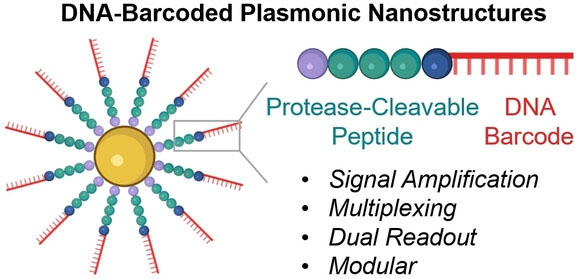Plasmonic Nanoparticles: Enhancing Light for Medicine, Imaging, & Energy
Definition: Plasmonic nanoparticles, typically made of metals like gold and silver, are minuscule particles capable of manipulating and enhancing electromagnetic fields. This unique ability allows them to concentrate light into very small volumes. For instance, they are used in pregnancy tests to produce the visible lines that indicate results, leveraging their light-enhancing properties for clearer, rapid diagnostics. Similarly, in environmental monitoring, they enable the detection of pollutants at extremely low concentrations, showcasing their broad applicability in sensing, imaging, and medicine.

Principles of Plasmonic Nanoparticles
At the core of plasmonic nanoparticles' functionality is the plasmon resonance. When light hits these nanoparticles, the free electrons on the metal surface oscillate, creating plasmons—waves of electron density. This resonance enhances the electromagnetic field near the nanoparticle, leading to significant light concentration and scattering.
Key Features and Applications
Plasmonic nanoparticles are celebrated for their size-dependent optical properties, which can be precisely tuned by adjusting their size, shape, and composition. This tunability allows for a wide array of applications:
- Sensing and Diagnostics: Their sensitivity to changes in the surrounding environment makes them perfect for detecting chemical and biological substances at very low concentrations.
- Photothermal Therapy: In medicine, they are used to target and destroy cancer cells by converting light into heat, offering a minimally invasive treatment option.
- Enhanced Imaging: Plasmonic nanoparticles improve the resolution and contrast of imaging techniques, enabling detailed visualization of cellular and molecular processes.
- Solar Cells and Photocatalysis: They enhance the efficiency of solar cells and photocatalytic processes by concentrating light onto the active regions of these devices.
Manufacturing and Synthesis
Synthesizing plasmonic nanoparticles involves various chemical and physical methods, each tailored to produce particles with specific shapes, sizes, and compositions. Techniques such as chemical reduction, lithography, and self-assembly are commonly used, enabling precise control over their optical properties.
Challenges and Future Directions
Despite their potential, challenges remain in realizing the full application scope of plasmonic nanoparticles. Issues such as stability, biocompatibility, and cost-effective production need addressing. Ongoing research aims to overcome these hurdles, paving the way for innovative solutions in technology and medicine.
Environmental and Health Implications
The environmental and health impacts of plasmonic nanoparticles are under close scrutiny. Studies focus on understanding their toxicity, persistence, and accumulation in biological systems and the environment, guiding safe and responsible application of these nanomaterials.
Recent Advances and Technological Breakthroughs
Recent advances in nanofabrication and characterization techniques have led to the development of complex plasmonic structures with unprecedented control over light at the nanoscale. Innovations such as hybrid plasmonic-photonic systems and ultra-sensitive sensors are opening new horizons in technology and science.
Further Reading
Applied Spectroscopy Reviews, Plasmonic nanoparticles and their analytical applications: A review
Nanotechnology Reviews, Recent progress and challenges in plasmonic nanomaterials
RSC Advances, Plasmonic nanoparticles in chemical analysis
